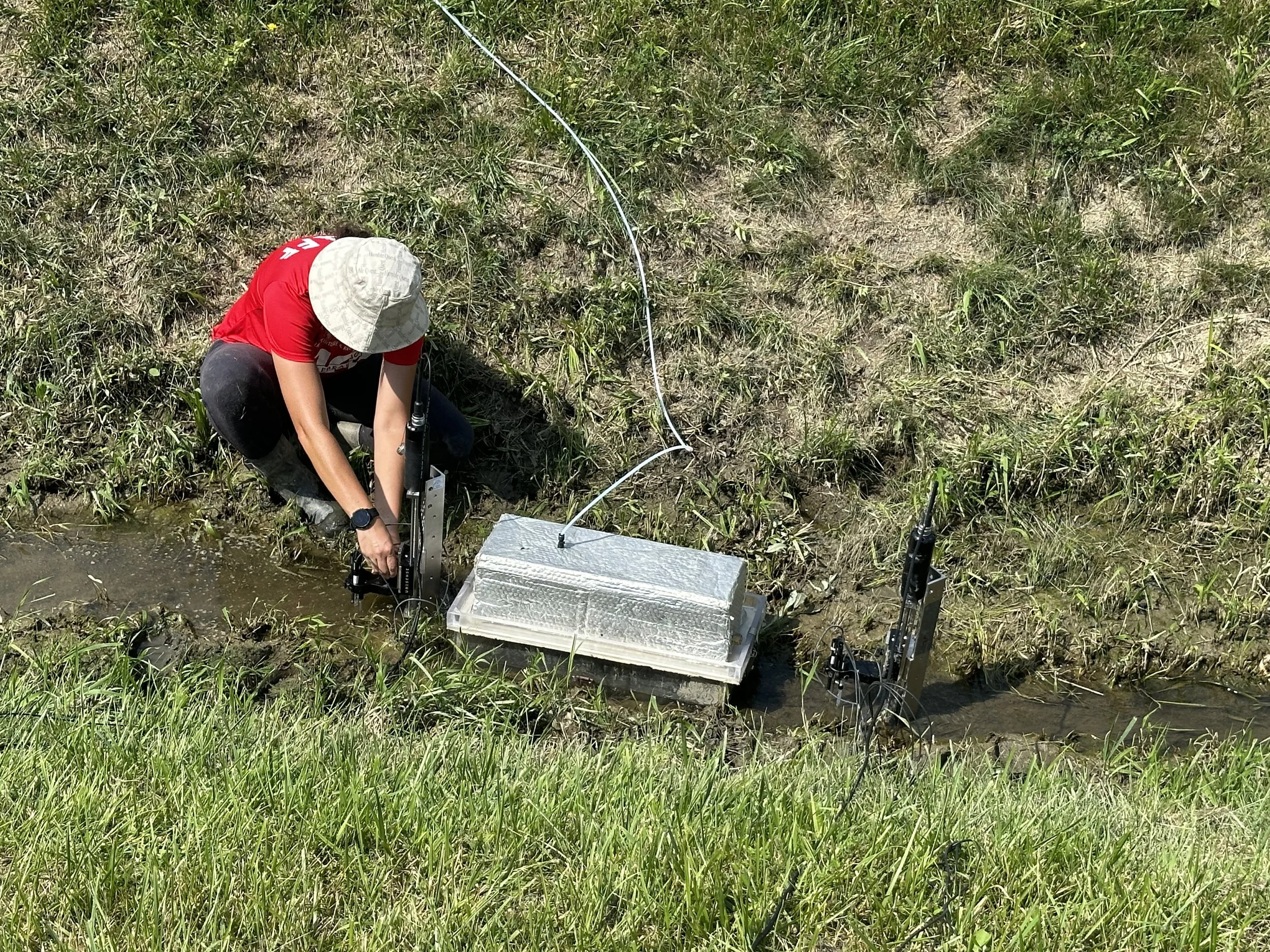Climate Change Impacts on Microbial Communities in Agriculture Systems
The Role of Microbial Activity and Vegetation Management Strategies in Agricultural Ditches on Greenhouse Gas Emissions
In Canada, the agriculture sector was responsible for approximately 10% of greenhouse gas (GHG) emissions in 2021, accounting for 54 MT of carbon dioxide (CO2), as well as 31% of methane (CH4) and 75% of national nitrous oxide (N2O) emissions. These estimates, however, do not include the indirect greenhouse gas emissions from agriculturally impacted waterways in the Great Lakes basin. Windsor-Essex County in Southwestern Ontario, Canada, has over 3000km of agricultural drainage ditches, collecting nutrient rich runoff from tiled fields and impacting both Lake St. Clair and Lake Erie. These ephemeral zero-order waterways experience fluxes of different types of excess nutrients, which creates nutrient hotspots and may disrupt baseline biogeochemical cycling of C, N, and P. They are also subjected to a variety of vegetation management strategies, such as dredging and mowing, which can further impact the microbial community structure and function. I am seeking the correlate microbial activity at the sediment-water interface in these waterways with N2O, CO2 and CH4 emissions. Additionally, the presence or absence of riparian vegetation will be compared to better understand the impacts of vegetation on the microbial community and greenhouse gas emissions. This work will provide better estimates for greenhouse gas emissions in Canada and offer a better understanding of current and future greenhouse gas targets.
Investigating Biofilm Structure and Function Associated with Point Source Water Treatment
The Canadian government has increased the focus on regulating discharge of wastewater to the environment to avoid the release of excessive nutrient loads to waterways which can lead to the eutrophication of watersheds. The advent of new regulations many municipalities require substantial upgrades. Traditional wastewater treatment technologies are in some cases cost prohibitive. Bishop Water Technologies (BWT) provides an ecofriendly and cost-effective technology for treating Canadian wastewater (municipal and industrial) while removing nutrients to rivers and lakes. The BioCord technology relies on the formation of Biofilm, which is a natural aggregation of a complex community of microorganisms growing on a solid substrate. BioCord is a man-made polymer substrate suitable for biofilm growth (Yuan et al. 2012). The cord is covered with rings of thread, both rings and cord are made of different polymers. The premise is that BioCord provides more surface area for biofilm to attach and develop, mimicking underwater plants; the increased density of the biofim in principle has a direct relationship to the rate and efficiency of wastewater treatment. The substrates encourage the microbial process (Bacteria and Archaea) such as Methanogens, denitrification, phosphate removal (complexation) and/or sulphate reduction etc. The current challenge to developing this technology lies in a detailed understanding of the developing microbial biofilm associated with these BioCord substrates. In fact this technology still remains a black box from the perspective of optimum growth and treatment conditions under full scale implementation practice. Depending on the environment, different microbes will accumulate some nutrients better than others and in turn may promote or out compete the process dependent microbes (e.g. denitrifiers). We are currently using metagenomics and metatranscriptomics to identify and quantify the microbial species populating the different BioCord materials.
